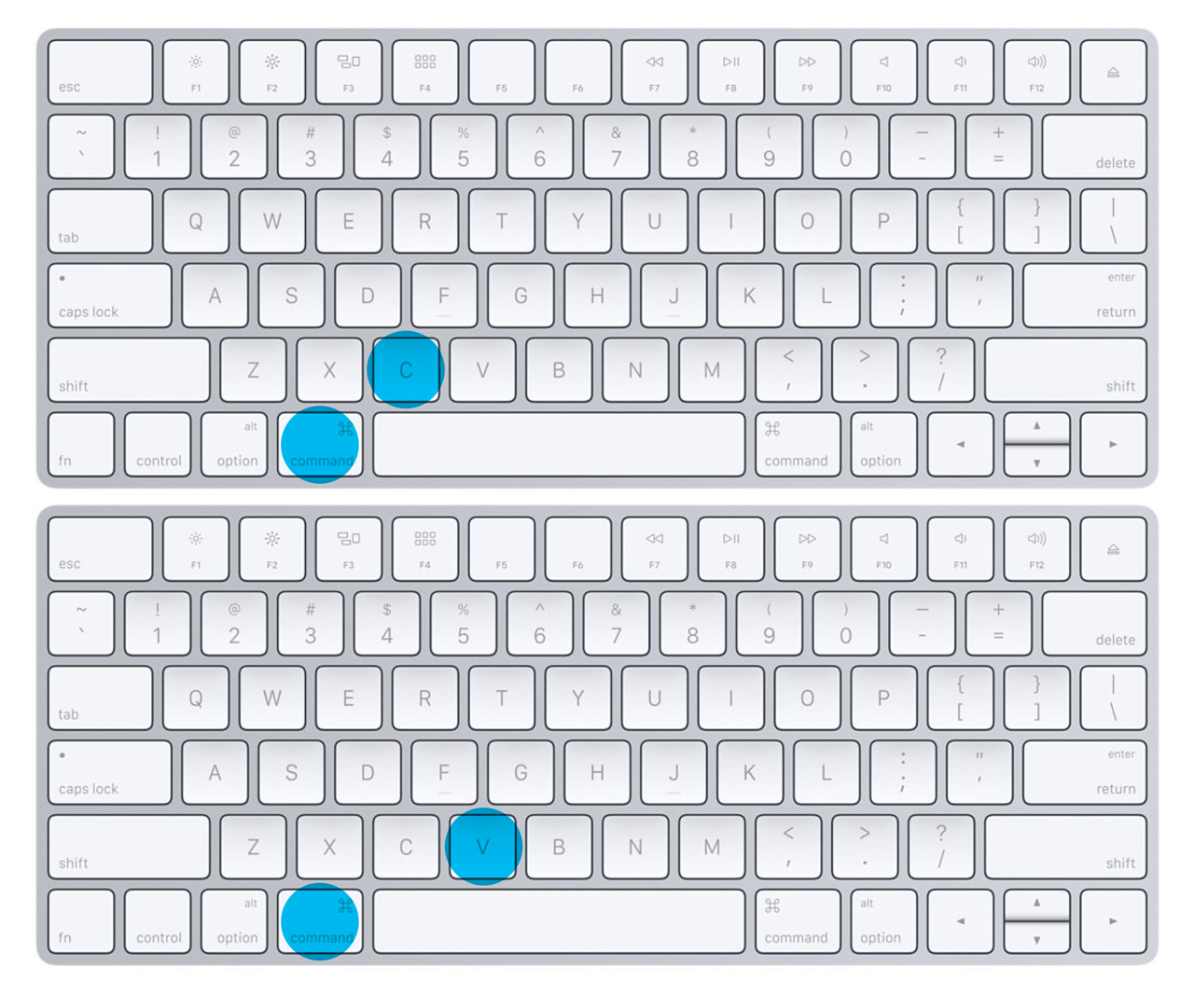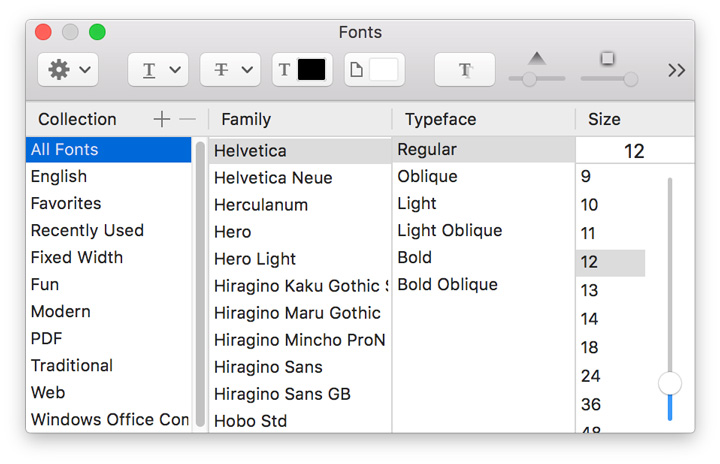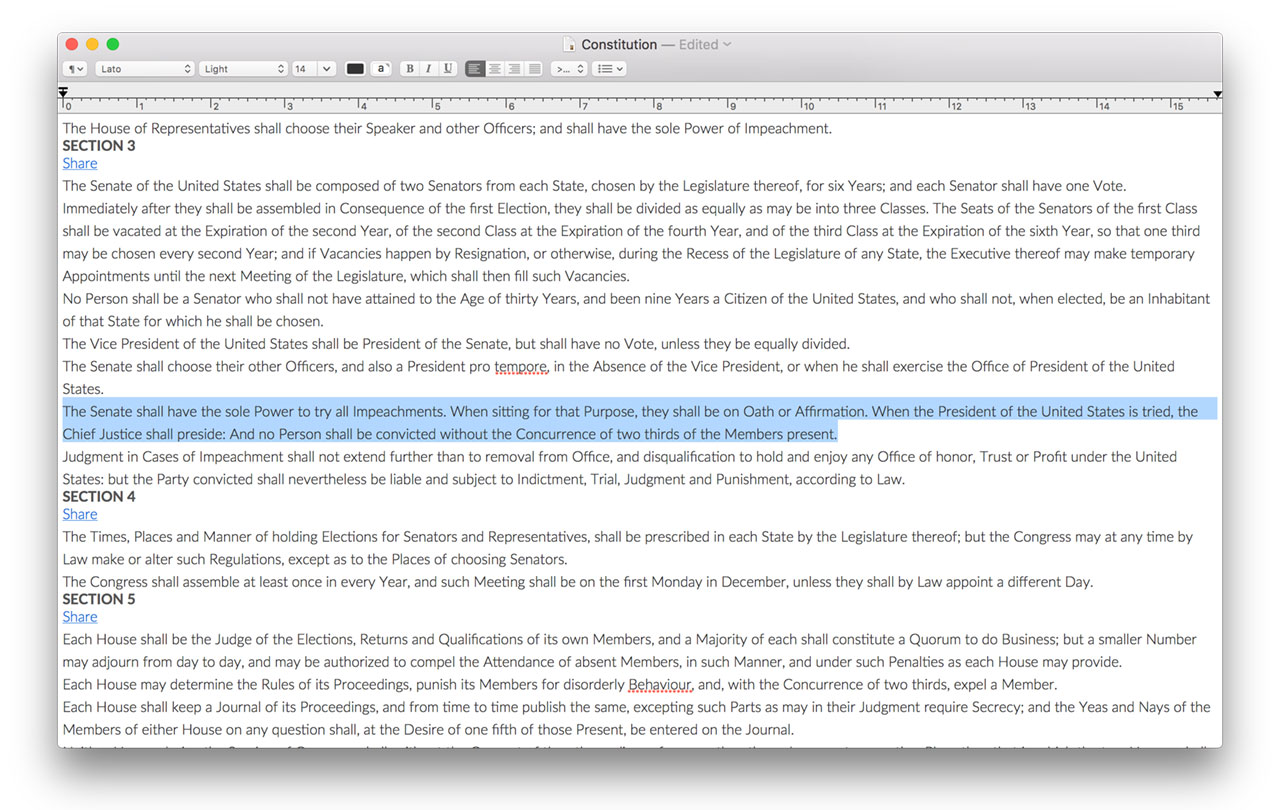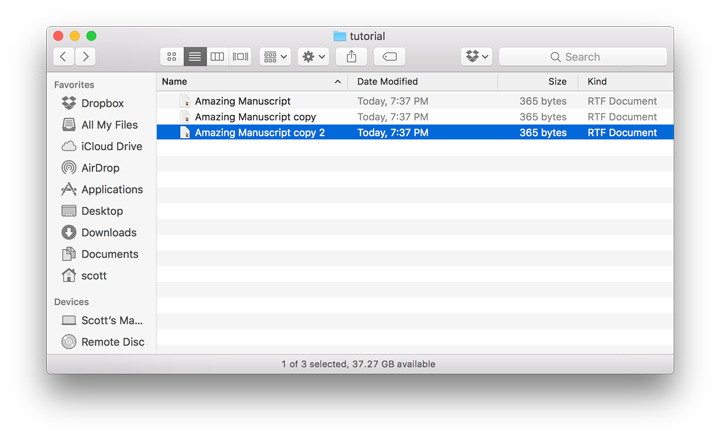Article
Mac Keyboard Shortcuts – The Ultimate Guide

- July 23, 2017
- Updated: July 2, 2025 at 6:49 AM

One of the best ways to speed up common computing task is to learn and utilize simple keyboard shortcuts. So we’ve collected a lengthy list of the most useful Mac Keyboard Shortcuts you’ll need. Note for Windows users: we haven’t left you out! You can find a list of 45 Windows 10 Shortcuts here.
A quick keyboard command can save you precious seconds of time when performing certain tasks, like formatting text or moving files. And those seconds add up quickly. Brainscape estimates that the average worker could save 8 full working days per year by employing keyboard shortcuts.
Mac users are a very creative a smart group, but many of us don’t know the full range of common Mac commands that can be performed easily and with great speed using just a handful of simple keyboard shortcuts.
Learning just a handful of these key press combinations can make a huge time and productivity improvement.
Before you jump into memorizing and practicing all the different Mac keyboard shortcuts available, it’s smart to familiarize yourself with the location of the most common keys used for shortcuts. Let’s take a quick look at the location of the following:
- Command
- Shift
- Option
- Control
- Caps Lock
- Fn

Take a moment to locate these keys on your keyboard, all of which tend to be grouped in the bottom corners. They will appear very frequently in the list of keyboard shortcuts below.
Ready to go? Dive right in by first looking at some of the most common keyboard shortcuts you’ll use on your Mac.
The Most Common Mac Keyboard Shortcuts
Think of these as the basics. If you, or someone you love, copies and pastes text using the mouse cursor and menu, it might be time for an intervention.
Cut, Copy and Paste
Command + X
Cut the selected item and copy it to the Clipboard
Command + C
Copy the selected item to the Clipboard. This also works for files in the Finder.
Command + V
Paste the contents of the Clipboard into the current document or app. This also works for files in the Finder.

Bonus: Copying the Style Only
Adding the Option key to some of the above lets you play a cool trick with copy and paste. Using these shortcuts, you can copy just the formatting and style of a selection and then apply it to a different selection. All with just the keyboard!
Option + Command + C
Copy Style: Copy the formatting settings of the selected item to the Clipboard.
Option + Command + V
Paste Style: Apply the copied style to the selected item.
Option + Shift + Command + V
Paste and Match Style: Apply the style of the surrounding content to the item pasted within that content.
The Almighty Undo
Seriously, this might be the most useful and time-saving shortcut of all-time. Don’t forget about adding the Shift key for a Redo!
Command + Z
Undo the previous command. You can then press Command + Shift + Z to Redo, reversing the undo command. In some apps, you can undo and redo multiple commands.

Selecting, Finding, and More Basic Keyboard Shortcuts
The following list of Mac keyboard shortcuts rounds out the list of the basics.
Common + A
Select All items.
Command + F
Find items in a document or open a Find window.
Command + G
Find Again: Find the next occurrence of the item previously found. To find the previous occurrence, press Command + Shift + G.
Command + H
Hide the windows of the front app. To view the front app but hide all other apps, press Command + Option + H.
Command + M
Minimize the front window to the Dock. To minimize all windows of the front app, press Command + Option + M.
Command + N
New: Open a new document or window.
Command + O
Open the selected item, or open a dialog to select a file to open.
Command + P
Print the current document.
Command + S
Save the current document.
Command + W
Close the front window. To close all windows of the app, press Command + Option + W.
Command + Q
Quit the app.
Command + Option + Esc
Force Quit: Choose an app to force quit. Or press Command + Shift + Option + Esc and hold for 3 seconds to force just the front app to quit.
Command + Space Bar
Spotlight: Show or hide the Spotlight search field. To perform a Spotlight search from a Finder window, press Command + Option + Space Bar. If you use multiple input sources to type in different languages, these shortcuts change input sources instead of showing Spotlight.
Space Bar
Quick Look: Use Quick Look to preview the selected item.
Command + Tab
Switch apps: Switch to the next most recently used app among your open apps.
Shift + Command + Tilde (~)
Switch windows: Switch to the next most recently used window of the front app.
Shift + Command + 3
Screenshot: Take a screenshot of the entire screen.
Note: there are a lot more keyboard shortcuts you can use to get even more control over your screenshots on the Mac.
Command + Comma (,)
Preferences: Open preferences for the front app.
Sleep, Logout, and Shutdown Shortcuts
Is the Boss walking around the corner? Need a quick way to shut down or put your Mac to sleep? Or are you experiencing the infamous “Beach Ball of death?”
Power Button
Press to turn on your Mac or wake your Mac from sleep. Press and hold for 1.5 seconds while your Mac is awake to display a dialog asking if you want to sleep, restart, or shut down. If you don’t want to wait 1.5 seconds, press Ctrl + Power Button or Control + Media Eject. Press and hold for 5 seconds to force your Mac to turn off.
Control + Command + Power Button
Force your Mac to restart.
Control + Shift + Power Button
Put your displays to sleep.
Control + Command + Media Eject
Quit all apps, then restart your Mac. If any open documents have unsaved changes, you’ll be asked whether you want to save them.
Control + Option + Command + Power Button
Quit all apps, then shut down your Mac. If any open documents have unsaved changes, you’ll be asked whether you want to save them.
Shift + Command + Q
Logout of your macOS user account. You’ll be asked to confirm.
Option + Shift + Command + Q
Logout of your macOS user account immediately, without being asked to confirm.
Document Shortcuts
We all work with a lot of documents on the Mac. Here are some of the best keyboard shortcuts for handling everything from formatting to text selection and beyond. Once you start using these regularly, you’ll wonder why you ever even bothered with the mouse.
Formatting and Style Basics
Command + B
Boldface the selected text, or turn boldfacing on or off.
Command + I
Italicize the selected text, or turn italics on or off.
Command + U
Underline the selected text, or turn underlining on or off.
Command + Left Curly Bracket ({)
Left align.
Command + Right Curly Bracket (})
Right align.
Shift + Command + Vertical Bar
Center align.
Shortcuts for Important Dialogs and Windows

Command + T
Show or hide the Fonts window.
Command + D
Select the Desktop folder from within an Open dialog or Save dialog.
Control + Command + D
Show or hide the definition of the selected word.
Shift + Command + Colon (:)
Display the Spelling and Grammar window.
Command + Semicolon (;)
Find misspelled words in the document.
Option + Command + F
Go to the search field.
Option + Command + T
Show or hide a toolbar in the app.
Option + Command + I
Show or hide the inspector window.
Shift + Command + P
Page setup: Display a window for selecting document settings.
Shift + Command + S
Display the Save As dialog, or duplicate the current document.
Shift + Command + Question mark (?)
Open the Help menu.
Faster Deletion with Shortcuts
Option + Delete
Delete the word to the left of the insertion point.
Control + H
Delete the character to the left of the insertion point. Or use Delete.
Control + D
Delete the character to the right of the insertion point. Or use Fn + Delete.
Fn + Delete
Forward delete on keyboards that don’t have a Forward Delete key. Or use Control + D.
Control + K
Delete the text between the insertion point and the end of the line or paragraph.
Command + Delete
Select Delete or Don’t Save in a dialog that contains a Delete or Don’t Save button.
Moving Around Your Documents with Speed
Fn + Up Arrow
Page Up: Scroll up one page.
Fn + Down Arrow
Page Down: Scroll down one page.
Fn + Left Arrow
Home: Scroll to the beginning of a document.
Fn + Right Arrow
End: Scroll to the end of a document.
Command + Up Arrow
Move the insertion point to the beginning of the document.
Command + Down Arrow
Move the insertion point to the end of the document.
Command + Left Arrow
Move the insertion point to the beginning of the current line.
Command + Right Arrow
Move the insertion point to the end of the current line.
Option + Left Arrow
Move the insertion point to the beginning of the previous word.
Option + Right Arrow
Move the insertion point to the end of the next word.
Control + A
Move to the beginning of the line or paragraph.
Control + E
Move to the end of a line or paragraph.
Control + F
Move one character forward.
Control + B
Move one character backward.
Control + L
Center the cursor or selection in the visible area.
Control + P
Move up one line.
Control + N
Move down one line.
Control + O
Insert a new line after the insertion point.
Control + T
Swap the character behind the insertion point with the character in front of the insertion point.
Keyboard Shortcuts for Selecting Text

Shift + Up Arrow
Extend text selection to the nearest character at the same horizontal location on the line above.
Shift + Down Arrow
Extend text selection to the nearest character at the same horizontal location on the line below.
Shift + Left Arrow
Extend text selection one character to the left.
Shift + Right Arrow
Extend text selection one character to the right.
Shift + Command + Up Arrow
Select the text between the insertion point and the beginning of the document.
Shift + Command + Down Arrow
Select the text between the insertion point and the end of the document.
Shift + Command + Left Arrow
Select the text between the insertion point and the beginning of the current line.
Shift + Command + Right Arrow
Select the text between the insertion point and the end of the current line.
Option + Shift + Up Arrow
Extend text selection to the beginning of the current paragraph, then to the beginning of the following paragraph if pressed again.
Option + Shift + Down Arrow
Extend text selection to the end of the current paragraph, then to the end of the following paragraph if pressed again.
Option + Shift + Left Arrow
Extend text selection to the beginning of the current word, then to the beginning of the following word if pressed again.
Option + Shift + Right Arrow
Extend text selection to the end of the current word, then to the end of the following word if pressed again.
Changing the Size of an Item
Shift + Command + Minus sign
Decrease the size of the selected item.
Shift + Command + Plus sign
Increase the size of the selected item. Command + Equal sign(=) performs the same function.
Finder Shortcuts
If you work with a lot of files and folders, then you probably spend a lot of time in the Mac Finder. There’s no end to the tools and utilities that can make your productivity and efficiency better in Finder, but you’d be surprised at what you can accomplish with just a few simple keyboard shortcuts.
Working with Files

Command + D
Duplicate the selected files.
Command + E
Eject the selected disk or volume.
Command + F
Start a Spotlight search in the Finder window.
Command + I
Show the Get Info window for a selected file.
Working with Folders
Shift + Command + D
Open the desktop folder.
Shift + Command + G
Open a Go to Folder window.
Option + Command + L
Open the Downloads folder.
Shift + Command + O
Open the Documents folder.
Shift + Command + U
Open the Utilities folder.
Shift + Command + N
Create a new folder.
Option + Command + N
Create a new Smart Folder.
Getting Around in Finder
Shift + Command + C
Open the Computer window.
Shift + Command + F
Open the All My Files window.
Shift + Command + H
Open the Home folder of the current macOS user account.
Shift + Command + I
Open iCloud Drive.
Shift + Command + K
Open the Network window.
Shift + Command + R
Open the AirDrop window.
Command + N
Open a new Finder window.
Advanced Keyboard Shortcuts for Finder
Shift + Command + T
Add selected Finder item to the Dock (OS X Mountain Lion or earlier).
Control + Shift + Command + T
Add selected Finder item to the Dock (OS X Mavericks or later).
Option + Command + D
Show or hide the Dock. This often works even when you’re not in the Finder.
Control + Command + T
Add the selected item to the sidebar (OS X Mavericks or later).
Option + Command + P
Hide or show the path bar in Finder windows.
Option + Command + S
Hide or show the Sidebar in Finder windows.
Command + Slash
Hide or show the status bar in Finder windows.
Command + J
Show View Options.
Command + K
Open the Connect to Server window.
Command + L
Make an alias of the selected item.
Command + R
Show the original file for the selected alias.
Command + T
Show or hide the tab bar when a single tab is open in the current Finder window.
Shift + Command + T
Show or hide a Finder tab.
Option + Command + T
Show or hide the toolbar when a single tab is open in the current Finder window.
Option + Command + V
Move: Move the files in the Clipboard from their original location to the current location.
Option + Command + Y
View a Quick Look slideshow of the selected files.
Command + Y
Use Quick Look to preview the selected files.
Command + 1
View the items in the Finder window as icons.
Command + 2
View the items in a Finder window as a list.
Command + 3
View the items in a Finder window in columns.
Command + 4
View the items in a Finder window with Cover Flow.
Command + Left Bracket
Go to the previous folder.
Command + Right Bracket
Go to the next folder.
Command + Up Arrow
Open the folder that contains the current folder.
Command + Control + Up Arrow
Open the folder that contains the current folder in a new window.
Command + Down Arrow
Open the selected item.
Command + Mission Control
Show the desktop. This works even when you’re not in the Finder.
Command + Brightness Up
Turn Target Display Mode on or off.
Command + Brightness Down
Turn display mirroring on or off when your Mac is connected to more than one display.
Right Arrow
Open the selected folder. This works only when in list view.
Left Arrow
Close the selected folder. This works only when in list view.
Option + Double Click
Open a folder in a separate window and close the current window.
Command + Double Click
Open a folder in a separate tab or window.
Command + Delete
Move the selected item to the Trash.
Shift + Command + Delete
Empty the Trash.
Option + Shift + Command + Delete
Empty the Trash without confirmation dialog.
Command + Y
Use Quick Look to preview the files .
Option + Brightness Up
Open Displays preferences . This works with either Brightness key.
Option + Mission Control
Open Mission Control preferences.
Option + Volume Up
Open Sound preferences. This works with any of the volume keys.
Command key while dragging
Move the dragged item to another volume or location. The pointer changes while you drag the item.
Option key while dragging
Copy the dragged item. The pointer changes while you drag the item.
Option + Command while dragging
Make an alias of the dragged item. The pointer changes while you drag the item.
Option + click a disclosure triangle
Open all folders within the selected folder. This works only when in list view.
Command + click a window title
See the folders that contain the current folder.
There you have it. A complete list of all the essential Mac keyboard shortcuts. Think we missed some? Have some suggestions for more to include? Don’t be shy and leave your comments below.
You may also like
 News
NewsRichard Linklater returns to Netflix with a film about what is considered the best director in the history of France
Read more
 News
NewsGoogle has just sued the Chinese hacker group that stole 1 billion dollars from millions of its users
Read more
 News
NewsThe movie of one of the most enigmatic characters of Spider-Man is coming to Disney+
Read more
 News
NewsThe CEO of Nexon defends the use of AI in ARC Raiders stating that "all companies are using AI right now"
Read more
 News
NewsAnakin Skywalker was going to be completely different from the way we know him
Read more
 News
NewsThe latest State of Play disappoints and the producer of Octopath Traveler 0, one of the announced games, comes out to apologize
Read more